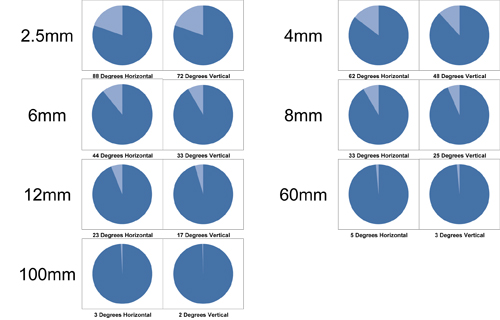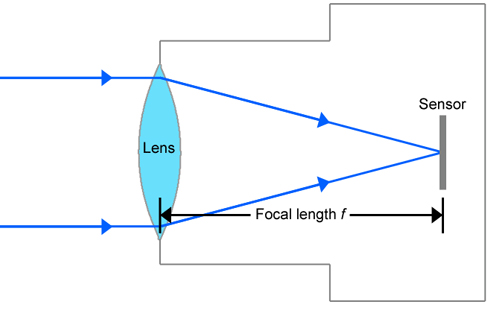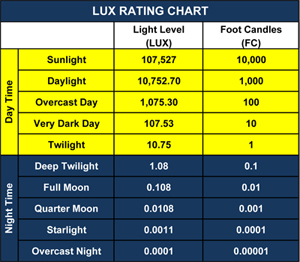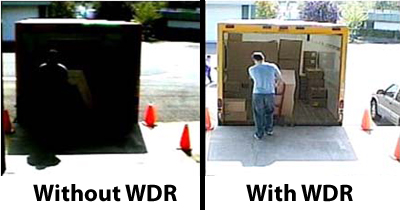Box Security Cameras
The original security camera, this design is still being used in security solutions today. Box cameras do not come with a lens. Instead you have the option to select from a wide variety of lenses. Another strength of the lens design is that they are larger than the typical camera. This means more light can come in contact with the sensor, and this gives you more clarity. Many people also like the impact a box camera can make when placed in a large outdoor housing.
Typically they scream “high security”. Lastly, you have incredible versatility for mounts. There are hundreds of solutions (housings, mounts, and brackets) that use standard bayonet mounts.
No products were found matching your selection.
Box Camera Terminology
AWB - Most modern security cameras have built-in AWB. Video that is captured in fluorescent light will look a lot different that images captured using HID lighting. Sometimes colors become washed out, or look like a different color altogether. A security camera can overcome this problem and adjust the video utilizing AWB in its DSP. This technology analyzes the video in black and white to determine what is truly white and what is truly black. From that analysis, the true color of the objects in the video can be determined. The camera then makes adjustments to the video and sends it on to the DVR for recording or viewing. C/CS Lens - C Mount and CS Mount type lenses comprise a standard for video lenses that attach to a camera via a threaded collar. The difference between the two is determined by their flange back distance which is the distance between the back of the lens and the imaging sensor of the camera. CS Mount lenses have a flange back distance of 12.5mm vs. 17.526mm for C Mount lenses. All box security cameras offered on our site will accept C or CS Mount lenses. CCD - All surveillance cameras utilize an image sensor to convert light into electrical signals. There are basically two kinds of image sensors, CMOS and CCD. Most security cameras use a CCD or Charged Coupled Device. Neither type of image sensor is categorically superior to the other, as they both have their strength and weaknesses. A major benefit of CCD vs CMOS is that they typically perform better in photographic, scientific and industrial applications which require exacting imaging standards. These types of cameras are typically larger due to the CCDs inability to integrate any image processing circuitry onto the chip itself. A typical surveillance camera configuration consists of a CCD imaging chip, multiple supporting chips, and a lens. CMOS - As with CCD, it is common to find security cameras with CMOS or Complementary Metal Oxide Semiconductor image sensors. A major benefit of using CMOS vs CCD image sensors is that many of the image processing functions of the camera can be built into the CMOS chip itself. This allows for more compact circuitry and smaller camera size. In theory, a security camera could consist of a lens and one CMOS image sensor. This is due to the capability of including all image processing circuitry on the CMOS chip. However, in most applications, manufacturers that utilize CMOS also add other image processing components. Day/Night Camera - All day/night surveillance cameras are designed to provide the best possible images in daylight and low-light conditions. During the day, infrared light entering the camera can cause the images to be discolored or distorted. At night any extra light that the camera can gather, whether infrared or not can be used to improve LUX rating of the camera. That being said, the security camera must filter the infrared light out during the day, while allowing it into the camera at night or in low-light situations. Normal day/night surveillance cameras achieve this using software built into the camera. This is a somewhat "quick and dirty" method as the camera has to determine what wavelengths of infrared are undesireable. A True Day/Night camera uses a much more precise method of filtering out infrared light. A physical filter called an ICR Cut Filter that is tuned to a certain range of infrared light is positioned in front of the image sensor during the day. At night, it is mechanically moved out of the light path using a motor or actuator thus allowing the infrared light to enter the camera. This is the preferred method. DNR - In low light conditions or when viewing a scene that is illuminated using infrared, the main problem is noise. Light can scatter and infrared from the camera can illuminate dust and other particles in the air. This is particularly problematic when using the camera to detect motion. All the excess "movement" caused by noise triggers false motion events and eats up hard disk space. A feature of some of the more advanced surveillance cameras is DNR or Digital Noise Reduction. The security camera uses a DSP or Digital Signal Processor along with an algorithm to detect the noise in the video and digitally remove it. This smooths out the video and make motion detection more accurate. DSP - After the image sensor in the camera collects the image and converts it to an electrical signal, the DSP or Digital Signal Processor takes over. The DSP not only converts the electrical signal to a digital image, but it also performs any image manipulation that the camera is designed to perform. For example, the DSP would perform any AWB functions or WDR functions. Field of View - The Field of View or FOV of a camera lens is measured in degrees. As the focal length of a lens is increased, the field of view decreases and vice versa. It is important when choosing a lens for your security cameras that you keep in mind that when a "zoom" lens is used, that the field of view will be very narrow. In contrast, when you want a wide angle lens in order to capture as much of an angle as possible, the focal length will be very short. The chart below demonstrates some FOV angles associated with some common focal lengths.
|

|

|

|
